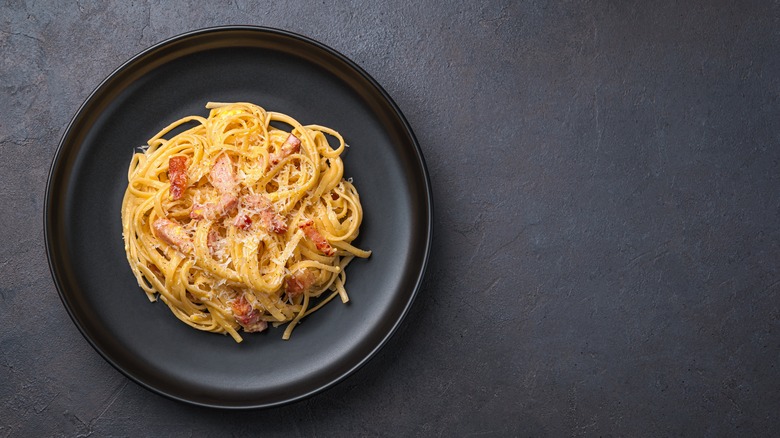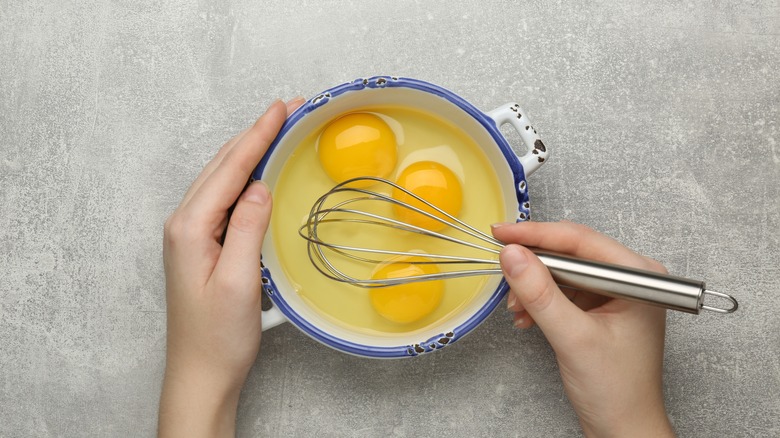The Egg Mistake That's Ruining Your Carbonara
Spaghetti carbonara — when done well — is not only one of the best Italian dishes, it's one of the easiest to do at home. Replete with Pecorino Romano cheese, pepper, and guanciale, this Roman pasta comes in rich and creamy, thanks in no small part to its reliance on eggs.
Eggs — typically 4 yolks to every 1 whole egg — are essential for carbonara sauce. Without the eggs, you'd have cacio e pepe instead of carbonara. Yet, while eggs define your carbonara's identity, they have to be incorporated delicately. If you add raw eggs to your still-steaming carbonara pan, you run the risk of making scrambled eggs, and nobody wants chunks of eggs in what's supposed to be a smooth, creamy emulsion. On the flip side, you don't want raw eggs either, so making your carbonara is all about getting your eggs to the right temperature.
While this may sound daunting, there's an easy fix. All you have to do is mix up your eggs ahead of time in a different pan.
Emulsify your eggs and cheese before adding heat
To avoid the dreaded scramble, the goal is to not let your eggs get too hot too quickly. Rather than add your eggs straight into your carbonara pan, crack them into a different bowl with the Pecorino. From there, you have a few options for how to combine the mixture with your pasta.
The first is by using tongs to move the cooked pasta directly into the bowl with the egg mixture. The hot pasta water from the noodles will slowly introduce the eggs to heat, allowing them to slowly congeal into a sauce rather than solidify. The concomitant pasta water is also necessary to thin out this congealing and ultimately help produce the sauce, but don't wash out the eggs' creaminess by adding too much.
Alternatively, you can also add some pasta water first to your emulsified mixture and then toss your drained spaghetti — and guanciale — into the egg and cheese mixture. With a little planning, a little mixing, and an extra bowl, your homemade carbonara will have you dreaming of la dolce vita.

